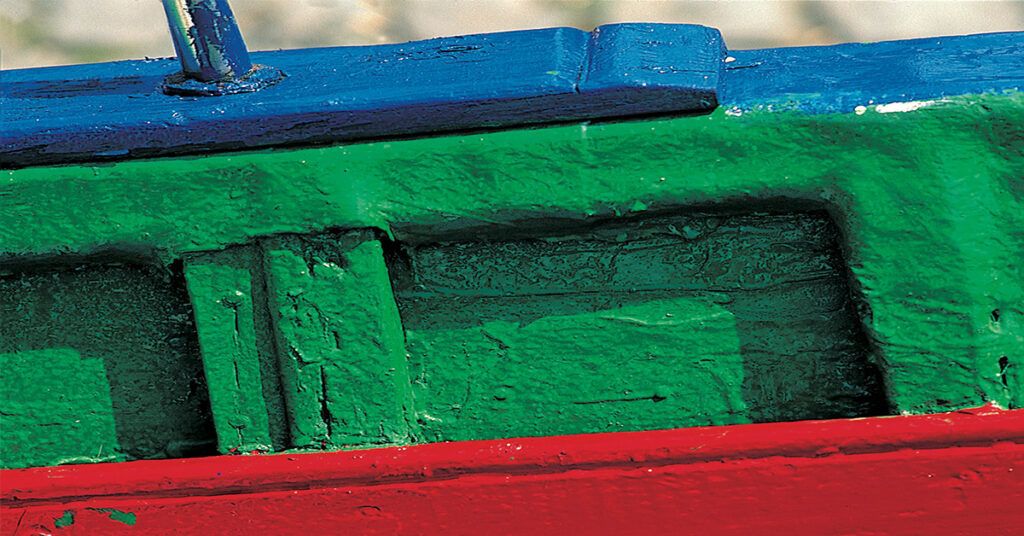Basque ethnography at a glance
The substitution of wood for synthetic materials in shipbuilding has led to the disappearance of colour in fishing ports and, imperceptibly almost, to a loss of identity too.
Colour is a characteristic of boats and fishing ports in all corners of the world; and certain colours, as well as shapes and specific elements of the ships, are what distinguish ports from one another everywhere. In Basque ports, for example, the prevalent colours are blue, red and green; rarely will we find any black or yellow in them. This set of colours must be a reflection, to some extent, of a way of understanding the world, something that developed over time until it become an expression of identity.
Colours also entice the eye with a certain splendour, joy, freshness, and enhance the peculiarities of the marine environs, their evocative spaciousness, freedom and mystery.
For some decades now, the gradual substitution of wood for fiberglass and other synthetic materials has mortally wounded ancestral professions and ways of life around fishing ports: riverside carpentry, artisan shipyards—an entire industry linked to the construction, repair and maintenance of wooden boats is disappearing day by day, silently, before our indifferent gaze.
Carpenters agree on this: wood, being heavier, is better suited to water. But they concede that polyester is cheaper; not only that, it makes maintenance of a ship easier in financial terms since polyester does not rot and is more resistant to impact. And polyester does not age. If growing old means growing wise, however, wood truly knows much about that. But new materials and mass production prevail: it is the sign of the times.
The spread of polyester to the detriment of wood has brought forth the erasure of the polychromy of ports: it has undone the colourful canvas of boats, dinghies, longboats, fishing boats, ferries, motorboats, steamers and ships of all kinds. Polyester, monochrome and lacking the nobility of wood, bleaches the ports, and the dominant all-white of modern ships, flat and without nuance, blinds the eye and impoverishes the landscape. That anodyne, uniforme whiteness and that cold, vulgar plastic, with all its undeniable advantages, can’t help being the aesthetic version of the “throwaway” model, and one of the darker sides of globalization.
Fishing ports, those colorful little worlds inhabited by the textures of the old wood of old ships and their layers of exposed paint, the color palettes of the paint tests in the shipyards, the maps of rust on aged iron… Are they not —or were they not— an expression of the colour, texture, and character of a people? Nowadays, they look more and more like marinas, all colourless, all the same, devoid of history or identity. An identity that escapes us like sand through our fingers.
Konrado Mugertza – Photographer



